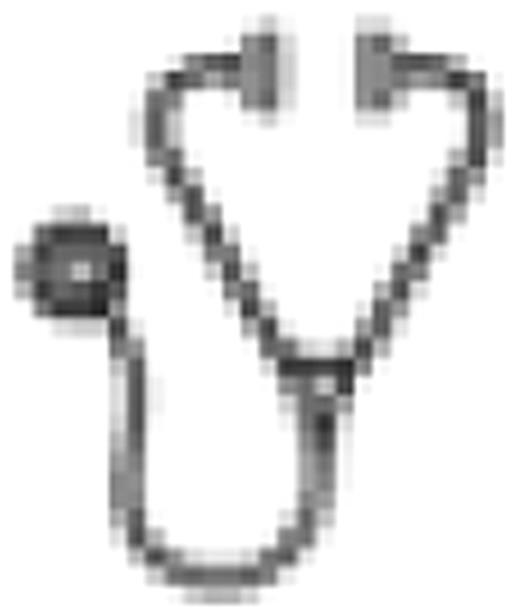Abstract
Abstract 3473
Allogeneic stem cell transplantation (SCT) is a potentially curative approach for patients (pts) with various hematological malignancies. However, standard myeloablative conditioning (MAC) is limited to younger, medically fit pts. Reduced-intensity conditioning (RIC) is feasible in pts not eligible for MAC, allowing engraftment and limiting organ toxicity, however, relapse rates are increased, especially in pts not in remission at the time of SCT. Novel approaches are in need to deliver dose intense conditioning, yet with RIC type toxicity, to these pts. Treosulfan is a bifunctional alkylating agent with cytotoxic and immunosuppressive effects. Prior studies demonstrated the feasibility of a fludarabine-treosulfan (FT) conditioning regimen, suggesting it is effective with limited toxicity. To better define the role of FT, we analyzed outcomes of a relatively large cohort of pts, treated in a single institution. Pts were eligible for FT only if considered not eligible for MAC, due to advanced age, comorbidities or extensive prior therapy (including a prior SCT). FT included fludarabine 30 mg/m2, on days -6 to -2, and treosulfan 10–12 gr/m2 on days -6 to -4. Pts with an unrelated donor or no prior chemotherapy were also given ATG (Fresenius, total dose 15 mg/kg). The study included 105 pts, median age 57 years (range, 20–76). Diagnoses included AML (n=56), MDS (n=33), CML (n=3), lymphoid malignancies (n=12) and myelofibrosis (n=1). The donor was an HLA-matched sibling (n=50) or matched unrelated [MUD, n=55; 10/10 match (n=43), 9/10 (n=7), 8/10 (n=5)]. Disease status was defined as early (n=17), intermediate (n=24) or advanced (n=64) by standard criteria. This was a relatively high-risk pt group as only 24 pts (23%) were in CR (first or later), 30 pts had a comorbidity score ≥3 and 22 pts had a Karnofsky score ≤80 at the time of SCT. Twenty-seven pts had a prior SCT; 13 autologous and 14 allogeneic (12 from a different donor). Ninety-five pts engrafted; 7 died prior to engraftment, 3 had early primary or secondary graft failure (MUD-1, mismatched MUD- 2 pts). The median time to neutrophil and platelet engraftment was 12 (range, 9–23) and 16 (range, 10–66) days, respectively. With a median follow-up of 16 months (range, 1–73), 57 pts are alive and 48 have died. The cumulative incidence of acute GVHD and grade III-IV acute GVHD was 26% and 11%, respectively. The cumulative incidence of chronic GVHD was 53%. In all, 8 pts died of complications of GVHD and 16 from other non-relapse causes, including multi-organ failure (n=4), CNS bleeding (n=2), infections (n=7), graft failure (n=2) and suicide (n=1). The cumulative incidence of non-relapse mortality 3-years after SCT was 25% (95%CI, 18–35). Twenty-four pts died of disease recurrence, cumulative incidence 30% (95%CI, 21–44) at 3 years. Considering that only 26% of the pts were in CR at the time of SCT, this rate seems promising. The median 3-year overall (OS) and progression-free survival were 45% (95%CI, 33–57) and 37% (95%CI, 26–49), respectively. The 2 most important factors predicting for OS in multivariate analysis were advanced disease and a low Karnofsky score at the time of SCT. Hazard ratios were 3.7 (p=0.03) and 4.2 (p=0.001), respectively. The 3-year OS was 71% (95%CI, 45–96), 33% (95%CI, 6–69) and 26% (95%CI, 6–46) for low, intermediate and advanced stage, respectively (p=0.03). Best results were obtained in pts with previously untreated MDS (n=33, including 28 pts with > 10% marrow blasts at SCT) and pts with high-risk AML in first CR (n=14), with 3-year OS rates of 61% (95%CI, 42–80) and 65% (95%CI, 38–93), respectively. Interestingly, a second SCT was not associated with a worse outcome. OS was 43% (42/78 alive), 46% (8/13 alive) and 40% (7/14 alive) in first SCT, a second SCT after a prior autologous SCT or a prior allogeneic SCT, respectively. In conclusion, treosulfan-based conditioning is a promising approach in pts with advanced hematological malignancies, not eligible for standard MAC. Favorable results were observed not only in pts with early stage disease, but also in previously untreated advanced MDS. Second SCT was also feasible with FT with a relatively favorable outcome. The low relapse risk suggests that this regimen can be considered a dose-intensive regimen, with a toxicity profile that resembles RIC regimens. The role of FT should be further defined in larger prospective studies.
No relevant conflicts of interest to declare.

This icon denotes an abstract that is clinically relevant.
Author notes
Asterisk with author names denotes non-ASH members.

